Communication
| Site: | Cowichan Valley School District - Moodle |
| Course: | ELA10 - New Media (2 credit), CSS, Cizeron |
| Book: | Communication |
| Printed by: | Guest user |
| Date: | Monday, 29 December 2025, 6:12 AM |
Table of contents
- Introduction
- Summary Explanation of Assignments
- ASSIGNMENT 1: Storytelling and Theme
- Other Narrative Literary Terms
- Expository Writing
- ASSIGNMENT 2: Expository Writing
- ASSIGNMENT 3: Online Writing
- ASSIGNMENT 4: Planning Your Social Media Prescence
- ASSIGNMENT 5: Ad Campaign
- ASSIGNMENT 6: Plot
- ASSIGNMENT 7: Editing Forum
- Narrative Writing
- ASSIGNMENT 8: PROJECT - Producing a Short Story
- Written Short Story
- Graphic Novel
- Movie
Introduction
Effective communication requires that we...
- Connect and engage with others
- Acquire, interpret and present information
- Collaborate to plan, carry out, and review constructions and activities
- Explain/recount and reflect on experiences and accomplishments
Consider all of these elements as you work through the assignments in this section.
Summary Explanation of Assignments
Here is a quick overview of the assignments for this unit. However, be sure you read over the specific assignment instructions that follow for each one. Review the marking rubrics for the assignments before you start.
ASSIGNMENT 1: Storytelling and Theme
Listen and follow along to the story Granddaughter was Eaten by a Big Fish paying attention to the nuances of voice and structure in First Peoples storytelling. But as you read and listen to the recording, think about the message or lesson of the story. What is the theme?
ASSIGNMENT 2: Expository Writing
It is important to know how to communicate clearly and effectively. Expository writing should be concise and accurately state your main idea. Be sure to read over the information on how to write effective expository papers.
ASSIGNMENT 3: Online Writing
Construct posts for Facebook, Twitter, and a blog practicing the concise writing skills you have developed in the lesson.
ASSIGNMENT 4: Reputation Management Plan
As you venture more into the world of social media, it is important to develop a plan. How do you want to be known on social media? Create a reputation management plan.
ASSIGNMENT 5: Ad Campaign
Research on online ad campaign and explain how social media is used. Evaluate the effectiveness of their online promotion. What tools were used in the campaign? Was the message clear? Do you believe the target audience was reached? Discuss the globalization of the media industry.
ASSIGNMENT 6: Plot
Demonstrate your learning of storytelling by pulling together all of your brainstorming into a coherent and structured plot outline. Make sure you know what a good plot diagram looks like.
ASSIGNMENT 7: Feedback FORUM
With the growth of text messaging and social media, correct punctuation and grammar have taken a back seat to new language like LOL, gtg, btw, etc.. Capitalization and other grammar conventions are sometimes lost in the haste of typing a post on the phone. Take a look at the examples provided and then write your own scenario.
ASSIGNMENT 8: PROJECT: Producing a Short Story
Develop a short story documentary into your own format.
ASSIGNMENT 1: Storytelling and Theme
|
Learning Target (Curricular Competencies):
|
"Oral tradition is the means by which cultural transmission occurs over generations, other than through written records. Among First Peoples, oral tradition may consist of told stories, songs, and/or other types of wisdom or information, often incorporating dances or various forms of visual representation such as carvings or masks. In addition to expressing spiritual and emotional truths (e.g., via symbol and metaphor), oral tradition provides a record of literal fact (e.g., regarding events and/or situations)." Source: English 10 and 11 First Peoples Curriculum – 2010 – Ministry of Education
As a teaching tool, stories are a valuable way to educate young people about the values and beliefs that First Nations consider important for their members. They use many features and structures in the stories to derive meaning including:
- Context
- Text structures
- Syntax
- Diction
- Usage conventions
- Rhetorical devices
- Vocal techniques
- Nonverbal techniques
- Idiomatic expressions
Storytelling also uses a variety of voice techniques. These include:
- pace – fast to show excitement, slow to show importance
- pitch – high to show excitement, low to show importance and authority
- intonation – the rise and fall of your voice when you speak
- inflection – when your voice goes up at the end of the sentence as if you were asking a question
- tone – feeling needs to suit the words said
- volume – loud to show excitement, soft to show fear
- pause – a planned rest in your speaking to emphasize an idea.
Further explanation of these terms can be found at Literary Definitions.
Listen and follow along to the story Granddaughter was Eaten by a Big Fish which is on the next page. But as you read and listen to the recording, think about the message or lesson of the story. What is the theme?
The theme of a literary work is its underlying central idea or the generalization it communicates about life. The theme expresses the author's opinion or raises a question about human nature or the meaning of human experience. Theme illuminates some aspects of true human experience or the life lesson it exposes. It is NOT a one-word idea; rather it is a complete statement or sentence.
Watch this video on theme that accurately summarizes the definition of theme, how to uncover it in text, and how to write about it. There is also a handout in Class Handouts at the top of the course.
Task:
1. Listen and follow along to "Granddaughter was Eaten by a Fish" (found on the next page)
2. As you listen, consider how literary structures, oral techniques, and devices enhance and shape meaning and impact.
3. Write a succinct theme statement (one sentence). Then write a 200 word paragraph explaining the theme of the story. Make reference to the story in your paragraph.
ALTERNATIVELY.....
1. You could write your own story and record it in similar style to this example. You would still need to listen and read this example, consider features and structures in the stories to derive meaning, incorporate the voice techniques, AND, last but not least, integrate a similar theme statement/message.
Assessment: Below you will find the exemplary criteria used to assess the assignment.
Learning Target: (Exemplary 6/6): Exemplary comprehension of the task and clear accomplishment of the objective. Students demonstrates critical, creative and reflective thought to explore ideas within, between and beyond the text. Ideas generated are thoughtful and unique.
Written Expression: Exemplary (6/6): Sentence structure and vocabulary are varied, skillfully written, and carefully chosen. Work has been proofread and there are few or no errors in spelling, capitalization, punctuation, and grammar. Content contributes to the central idea and makes insightful connections with logical organization.
Submission:
Use the "2.1 Storytelling and Theme" link on the main page of this section of the course to upload your assignment to your teacher for marking.
Granddaughter was Eaten by a Big Fish
This is a story about Gookum (Cree word for "grandmother") and her mischievous granddaughter, Beulah. Beulah was a very curious little girl. She was always wandering off from the camp, looking for adventures. Gookum was always telling her to listen. One day, Gookum asked Beulah to get some water from the lake so she could make soup.
"Whatever you do, don't go swimming in the lake alone," said Gookum.
"Why not?" asked Beulah.
"Because there is a giant fish in that lake, and he will catch you and swallow you up if you swim too far."
"Eeeeeya, Gookum. I'm not afraid of a big fish."
So, Beulah went off to collect the water. Oh, it was a nice warm day. The sun shone brightly.
A squirrel chattered as she walked along the path.
"Go away, silly squirrel. I am busy."
A butterfly flew around the girl. She ran around in circles trying to catch the butterfly until it flew away. "I am really hot now," Beulah said to herself.
Finally, Beulah came to the lake. She went to the big rock where Gookum had showed her to stand to get water. She dipped her buckets in the lake. They filled up quickly. Those buckets were heavy now. She had to be very careful when she carried them to the shore, they were so heavy. With a cup, she scooped out the little sticks and leaves that floated on the top. She was ready to carry them back now.
Carrying the buckets made Beulah tired. She lay down next to the water, in a nice spot on a large flat rock. The sun shone on her. She was very hot, so she took off her shirt.
A blue jay landed in a tree next to the path.
The blue jay squawked at her.
"You noisy old bird. Stop disturbing me." The blue jay flew away.
Beulah decided to have a quick swim, just to cool off before she took the water back for Gookum. She removed all of her clothes and dived in.
The water was nice and cool. Beulah was a good swimmer. She decided she would swim out as far as she could. As she swam out, Beulah saw a huge silver flash in the water. It was a great big fish, and with one gulp, it swallowed her whole! Beulah found she was trapped in the stomach of the huge fish Gookum had warned her about.
"Oh no," she cried. "I should have listened to Gookum!"
Beulah had been gone a long time. Gookum thought that she had found an adventure and forgotten to get water. There was no point in worrying about her — there were chores to be done around camp. She cut wood and made dinner. When Beulah wasn't home by night, Gookum was worried, but she knew the little girl was able to take care of herself in the woods.
The next day, Beulah still was not back. Gookum needed food, so she gathered the fishing net and went down to the lake. She caught six fish. One was a huge creature that stretched as long as her arms and more. That big fish would feed a whole family for a week.
She started cutting up all the fish. When she finally got to the big fish, she slid the knife into the belly. Beulah jumped out, very much alive.
At first, Gookum was startled, but she quickly realized it was Beulah, who was covered head to toe in slimy, sticky fish innards.
She shook her head at Beulah, and began to laugh at her. "I told you, I told you not to swim in the lake." Beulah bowed her head and said nothing. She just went to the lake to clean off all the smelly fish slime.
Other Narrative Literary Terms
Other Narrative Literary Terms
Read through this list of terms. You should know these in order to best respond to literature. If you need to look up definitions and/or examples. This is a good website.
- analogy
- atmosphere/mood
- conflict (types)
- characterization: protagonist / antagonist; flat/round characters; static/dynamic characters
- dialogue
- dilemma
- euphemism
- exaggeration/overstatement
- flashback
- foreshadowing
- imagery
- irony
- paradox
- point of view: omniscient, limited omniscient, first / third person person, objective/subjective
- repetition
- satire
- suspense
- symbolism
- theme
- tone
Expository Writing
Definition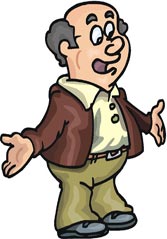 |
Expository writing will inform, explain, clarify, define, or instruct. |
| Characteristics |
|
| Sample Topics |
|
| Additional Websites |
ASSIGNMENT 2: Expository Writing
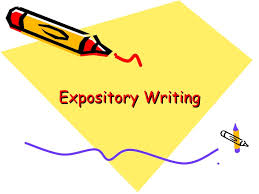
|
Learning Target (Curricular Competencies):
|
Expository writing is a type of writing where the purpose is to explain, inform, or even describe.
Make sure you review the characteristics and examples of expository writing in the introduction to this lesson before you begin this assignment.
Task:
Write a simple set of instructions for a 7th grade student who wants to start his own web-based business selling sunglasses on E-Bay (or another online selling application). He plans on ordering his sunglasses in bulk from China. He's hoping to capitalize on the Kanye Adidas Yeezy Boost shoes craze where a pair of running shoes now costs over $1000 simply by being associated with Kanye West. You will have to research how to sell on E-Bay. Be aware of your audience. You should come up with a numbered list of instructions. Be succinct and include 10 instructions.
Try to develop a specific voice that is consistent throughout the writing. Writer's Digest offers some suggestions.
Write the piece using the conventions of an instruction manual.
Assessment: Below you will find the exemplary criteria used to assess the assignment.
Learning Target: (Exemplary 6/6): Exemplary comprehension of the task and clear accomplishment of the objective. The expository piece is complete with ten instructions that are succinct and easy to follow.
Written Expression: Exemplary (6/6): Sentence structure and vocabulary are varied, skillfully written, and carefully chosen. Work has been proofread and there are few or no errors in spelling, capitalization, punctuation, and grammar. Content contributes to the central idea and makes insightful connections with logical organization.
Submission:
Use the "2.2 Expository Writing" link on the main page of this section of the course to upload your assignment to your teacher for marking.
ASSIGNMENT 3: Online Writing
|
Learning Target (Curricular Competencies):
|
Social Media requires concise writing. Always consider your main communication goals when developing social media activities. The keys to an effective social media presence are to
- Identify your target audience.
- Determine your objective.
- Select the appropriate channel for your message.
- Write the message concisely.
Check out this site on how to write for social media. Consider the basic tenets of concise writing.
- Understand your audience.
- Be clear on the message
- Use active voice.
- Get rid of extra words. Less is more.
- Proofread.
Although a wide variety of social media tools exist, we will discuss tips for three specific channels: Facebook, Twitter, and Blogs with a little extra help with Twitter.
"Twitter is an online social networking tool in which users post 280 character updates (tweets) of what is going on in their lives along with links to things they think are interesting, funny, or useful to their followers (“following” being essentially what “friending” is on other sites). People use twitter in many ways, some as a newsfeed by following prominent people or networks, some as a pseudo-chatroom by limiting their followers and whom they follow to close friends and family, and some as a microblog for updating people about the work they are doing and their personal lives.Tweets generally fall into one of the following categories."
Source: Mom, This is how Twitter Works
Other uses of Twitter include:
- to share a link to something useful/helpful
- to drive traffic to one's site, such as a headline and link to a new post
- to spread breaking news
- to provide commentary
- to chat or respond to someone else
- to pose a question or ask for help
- to update status, a la Facebook
- to entertain
- to weigh in on a popular conversation, usually referred to as a trending topic
- to promote an event
TEACHABLE MOMENT: Sidebar: Notice how each of the 10 items in the list all begin with an infinitive verb (in bold)? to share; to drive; to spread, etc. etc. This is called parallel structure. Review this rhetorical device.
When planning your Twitter presence, it's important to determine your focus. What will YOUR tweets do? There are different elements to consider when posting on social media as opposed to text media. It is important to be aware of your audience and the restrictions of the social media site you use.
- Link the content
- Give credit to where you found the article, video, etc. and who wrote or published it, preferably with an @mention
- Use a link shortener like bit.ly, tinyurl, goo.gl
- Keep it short and sweet, but still engage the audience - 280 characters
- Link the content
- Give credit to where you found the article, video, etc. and who wrote or published it
- Have more room but should still only be 1-3 sentences
- Encourage engagement; ask a question at the end to encourage comments
BLOG
- Link the content
- Give credit to where you found the article, video, etc. and who wrote or published it
- Organize your writing into paragraphs
- Encourage engagement with comments
- Keep the writing focused and not too lengthy. 200 words might be a good average point
- Summarize the content but still express your opinion.
Source: Sarah Nichols, MJE/Whitney High School, Rocklin Calif.
Task:
1. Read the article Facebook takes a Stand Against Employers Who Require Passwords.
You could find and provide your own article if you wanted.
2. Construct a post for Twitter, Facebook, and a blog to summarize the article. Follow the guidelines for each site. Note: the posts do not have to be actually posted on these sites.
Feel free to do further research on writing for these social media platforms. There is much advice available.
Assessment: Below you will find the exemplary criteria used to assess the assignment.
Learning Target: (Exemplary 6/6): Exemplary comprehension of the task and clear accomplishment of the objective. The posts for each social media site are accurately formatted and clearly summarize the article.
Written Expression: Exemplary (6/6): Posts are formatted correctly for each type of social media. Work has been proofread and there are few or no errors in spelling, capitalization, punctuation, and grammar. Content contributes to the central idea and makes insightful connections with logical organization.
Submission:
Use the "2.3 Online Writing" link on the main page of this section of the course to upload your assignment to your teacher for marking.
ASSIGNMENT 4: Planning Your Social Media Prescence
|
Learning Target (Curricular Competencies):
|
For small businesses or any social media venture, it is almost imperative to have a plan for developing a social media presence.
Remember that one of the first things a potential employer does is search your online presence. In fact, according to CareerBuilder, 70% of employers use social media to screen job applicants.
How do you want to be known on social media? Who are you going to follow, and who do you want to be followed by? How are you going to get people to follow and respond to you?
Read this article carefully as one example of how to create a plan to develop and improve a social media presence. You will use the main headings and ideas in this article to complete your assignment.
Task: Imagine any career or business you would like to have in the future. It could include a small business, being a promoter, an influencer, a consultant, etc.
1. Create a plan for developing your social media presence. Use the subtitles (except for #7, #8 and #10) in the article to guide your development of your plan. Briefly explain your choices, goals, etc. for each subheading.
2. Your plan can be in sentence or point form but should have a subtitle for each step.
Assessment: Below you will find the exemplary criteria used to assess the assignment.
Learning Target: (Exemplary 6/6): Exemplary comprehension of the task and clear accomplishment of the objective. Student has created a realistic, thoughtful, and well-developed plan that is based on the article.
Written Expression: Exemplary (6/6): Content is well-organized with subtitles and is easy-to-read. Work has been proofread and there are few or no errors in spelling, capitalization, punctuation, and grammar.
Submission:
Use the "2.4 Planning Your Social Media Presence" link on the main page of this section of the course to upload your assignment to your teacher for marking.
ASSIGNMENT 5: Ad Campaign
|
Learning Target (Curricular Competencies):
|
How are companies and advertisers using social media to promote products and services?
After looking at the Old Spice campaign, you will research an ad campaign of your choice. You will compile your information into a similar presentation.
Research on online ad campaign and explain how social media is used. Evaluate the effectiveness of their online promotion. What tools were used in the campaign? Was the message clear? Do you believe the target audience was reached? Discuss the globalization of the media industry.
Choices of campaigns to follow:
- Hank and John Green: These brothers started recording daily videos to each other that have since turned into a nerd fighter movement. They have banded together with other self-proclaimed nerds. John is an author of well known books like Looking for Alaska and The Fault in Our Stars.
- The 2012 Super Bowl commercial leak of the Ferris Bueller parody commercial
- American Airlines launched a thirty-day promotion; #deal130
- Canada 150 - Turning 150 years old prompted a number of Canadian businesses to temporarily rebrand: Participaction; KFC; Molson's, to name a few.
- Virgin Mobile launched an entire campaign based on a fake celebrity couple that they created.
- Starbucks has launched several successful online campaigns
- Find your own and discuss with your teacher
Task:
Give a history of the campaign.
- Give examples from the campaign.
- Describe how social media was used.
- Explain how the campaign was successful or unsuccessful.
- Discuss the globalization of the media industry.
- Present in 5 slides (minimum)
Assessment: Below you will find the exemplary criteria used to assess the assignment.
Learning Target: (Exemplary 6/6): Exemplary comprehension of the task and clear accomplishment of the objective. All parts of the task are included with specific details. Exemplary visual presentation.
Written Expression: Exemplary (6/6): Sentence structure and vocabulary are varied, skillfully written, and carefully chosen. Work has been proofread and there are few or no errors in spelling, capitalization, punctuation, and grammar. Content contributes to the central idea and makes insightful connections with logical organization.
Submission:
Use the "2.5 Ad Campaign" link on the main page of this section of the course to upload your assignment to your teacher for marking.
ASSIGNMENT 6: Plot
|
Learning Target (Curricular Competencies):
|
So, as you can see, it is important to consider organization, planning, and structure in online communication. We've covered that in the previous lessons in this unit. Now, let's consider what goes into making a movie - a documentary, in this case. Just as you should use an outline when you are writing an essay, you should use a storyboard when developing a movie. Storyboards are a series of diagrams or images that are used to show the detailed elements in each scene of the movie. They conceptualize the plot. One of the cornerstones of narrative writing, telling a story, is the plot.
Plot is the structure of a story; the sequence of events or actions that take place in the story.
| Intro (exposition) | should spark interest, provide background formation and establish the setting |
| Motivating Incident | the event which begins the story's action |
| Rising Action | a series of obstacles or problems that lead to the climax |
| Climax | the high point of tension or suspense in a story. Usually involves a resolution of conflicts |
| Falling Action | deals with the effects that the climax has on the characters |
| Conclusion (denouement) | briefly explains any details that require further clarification |
Watch the following video on plot to review the 5 parts.
Task:
1. Storyboard the plot of a short documentary that is designed to create awareness on an important issue. You should have at least 5 scenes in your submission (one for each part of the plot: introduction, rising action, climax, falling action, conclusion). If you can't think of a documentary of your own, then do this one called Highway of Tears.
- Click here for a sample storyboard.
- Click on the links below for a template you can use to create your storyboard.
- WORD: Storyboard Template
- PDF: Storyboard Template
Assessment: Below you will find the exemplary criteria used to assess the assignment.
Learning Target: (Exemplary 6/6): Exemplary comprehension of the task and clear accomplishment of the objective. The storyboard includes appropriate scenes for each part of the documentary that successfully creates awareness of an important issue. Content contributes to the central idea and makes insightful connections with logical organization.
Written Expression: Exemplary (6/6): Storyboard includes description of audio, important text or explanation, and a sketch that clearly illustrates the main parts of the documentary. Work has been proofread and there are few or no errors in spelling, capitalization, punctuation, and grammar.
Submission:
Use the "2.6 Plot" link on the main page of this section of the course to upload your assignment to your teacher for marking. You can upload the .pdf.
ASSIGNMENT 7: Editing Forum
|
Learning Target (Curricular Competencies):
|
Task:
With the growth of text messaging and social media, correct punctuation and grammar have taken a back seat to new language like LOL, gtg, btw, etc.. Capitalization and other grammar conventions are sometimes lost in the haste of typing a post on the phone. Take a look at the examples below.
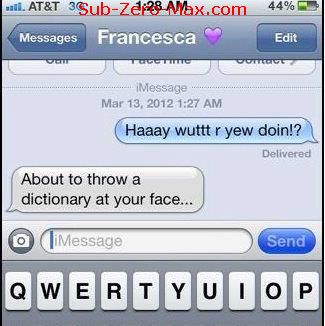
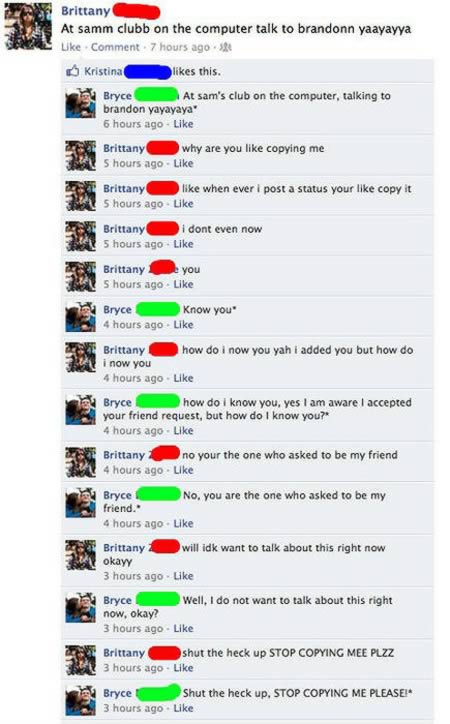
Write a text message conversation where one person is using poor grammar and the other person is correcting her/him. Incorporate some of the most common grammar errors into your dialogue. Each person should have at least 5 lines.
Check out this site that English teachers find humorous. Public and embarrassing grammar errors.
There are TWO activities in a FORUM:
- Go to the main page of the course and click on 2.7 Editing Forum. Start a new discussion topic by clicking on Add a New Discussion Topic. Add your dialogue.
- Reply/Respond to someone else's discussion topic by clicking on their topic and selecting Reply. Comment thoughtfully. Make an observation. Ask a question. Try using the following prompts to guide your response to another post. "I wonder…" "I know…" "I can…" Don't just agree or disagree.
Assessment: Below you will find the exemplary criteria used to assess the assignment.
Learning Target: (Exemplary 6/6): Exemplary comprehension of the task and clear accomplishment of the objective. Student demonstrates exemplary ability to develop and punctuate dialogue and assess and refine text to improve clarity and impact. Accomplishes the purpose with originality, individuality, and maturity and sophistication.
Response/Reply: Exemplary (6/6): The response/reply is thoughtful, insightful and respectfully exchanges ideas and viewpoints. Student demonstrates an exceptional level of understanding and communication of shared information.
Submission:
Use the "2.7 Editing Forum" link on the main page of this section of the course to post your forum response to your teacher for marking.
Narrative Writing

| Definition |
Narrative writing tells a story or part of a story. |
| Characteristics |
|
| Sample Topics |
|
| Additional Websites |
ASSIGNMENT 8: PROJECT - Producing a Short Story
|
Learning Target (Curricular Competencies):
|
Task:
For this project, develop a short story documentary like the sample you just watched in the previous lesson. However, you can present your story in written format or visual format.
Your documentary should tell a story you care about, inspire change, encourage a call to action. Start with a subject that excites you and go from there in your plot development. Here is Michael Moore's 13 Rules for Making Documentary Films if you need a place to get started and generate ideas.
There are 3 choices here:
- Written Short Story
- Graphic Novel
- Movie
There is an explanation for each of these options. Just choose ONE! Make sure you read over the guidelines for each of the options and review the exemplary criteria so you know what is expected for this project. Be sure to include your planning.
Assessment: Below you will find the exemplary criteria used to assess the assignment.
Learning Target: (Exemplary 6/6): Exemplary comprehension of the task and clear accomplishment of the objective. Student demonstrates superior story writing skills. Plot is efficiently developed around a relatively mature conflict with a clear climax. There is an identifiable and logical resolution to the story. There is appropriate pacing and a strong narrative voice with a consistent point of view. There is a clear setting and consistent and developed characterization. Story elements demonstrate complex, engaging ideas, language, and techniques.
Evidence of Planning: Exemplary use of writing and design processes to plan, develop, and create engaging and meaningful texts for a variety of purposes and audiences. There is clear evidence of planning in the form of rough notes, outline, story map, or storyboard.
Overall Presentation: Product uses features of the genre and format in a mature, efficient manner to aid in the overall purpose of enhancing meaning and artistry. Presentation is original and unique. Student demonstrates exemplary understanding of text features, structure, and format to communicate purpose. The story format creates an impact, with a sense of vitality, economy, and finesse.
Written Expression: Exemplary (6/6): Sentence structure and vocabulary are varied, skillfully written, and carefully chosen. Work has been proofread and there are few or no errors in spelling, capitalization, punctuation, and grammar.
Written Short Story
Here are some guidelines for your short story:
- Your story should have ONE main character and a MAXIMUM of THREE supporting characters.
- Your story must have a clear plot.
- Your story could include effective dialogue.
- Your story should include some type of conflict.
- Length? It's a short story...so 3 - 5 pages.
Organize
Your short story still needs to have all the major aspects of a narrative! Not sure what these are...
- Plot Structure
- Setting
- Character Development
- Conflict
- etc...
Create an outline of your story. You don't necessarily have to write out the whole story, only the main points. However, it is at this point that it is essential that you remember the main structure of the short story! Make sure you develop your characters and your plot!!!
Story Map
Now that you have your outline, you need to create a Story Map. A story map is a visual depiction of the settings or the sequence of major events and actions of story characters.
The most important part of this part of your assignment is your planning and a Story Map is a way to plan and organize your short story. You can complete your Story Map in ONE of two ways:
EITHER: Online Interactive Story Map
- Go to Story Mapping. [ReadWriteThink.org] Note:This link is to an insecure server which means that your browser will probably provide a warning and ask you to approve accessing this material.
- Follow the instructions and complete your Story Map.
- Click here to download the Story Map pages.
- Print the pages.
- Complete the pages.
Create
Now that you have planned and organized your story, it is time to write it. You will need to write a draft (or two) and have some mature writers read, review and edit it for you.
You may also upload it to your teacher for review BEFORE you do your final copy. Make sure you let your teacher know that it is a draft - put DRAFT at the top of the page and/or use Notes (in the upload link) to indicate that it is a draft.
Final Review
Once you have completed your Short Story you need to look it over once more and make any changes.
Some questions to ask yourself:
- Can the reader clearly identify my characters? Can they clearly see the characterizations?
- Does my plot develop? Introduction, Motivating Incident...Rising Action...Climax...Resolution?
- Is the setting clearly defined?
- Does the dialogue make sense?
- Is the story original and unique?
- Does the first line of the story hook you?
- Do the characters have unique characters rather than being stereotypical?
- Are the events in the story real and believable?
- Is the Point of View consistent throughout the story?
Make any changes you need to and, once you are happy with your story, you are ready to upload it to your teacher. Don't forget to submit evidence of your planning.
Graphic Novel
Organize
Your graphic novel still needs to have all the major elements of a narrative! Not sure what these are...
- Plot Structure
- Setting
- Character Development
- Conflict
- etc...
Create an outline of your entire story. You don't necessarily have to write out the whole story, only the main points. However, it is at this point that it is essential that you remember the main structure of the short story! Make sure you develop your characters and your plot!!! A graphic novel is not just a picture book! It uses images and words to develop a story; you must do the same.
Storyboard
Now that you have your outline, you need to story board. Story boarding is used by film makers to get an idea of the shots they need, to tell their story. We are going to use storyboarding so that you know what stills you need to tell your story.
For your stills you can draw them if you are so gifted, or you can take pictures. Get your actors together, have a plan of the shots you want, set your actors up, and shoot your stills. You can then upload them to your computer and use any presentation or design software to arrange them in graphic novel formats and add your dialogue.
The most important part of this part of your assignment is your planning. You can download a storyboarding sheet and use it to get a plan for your story. You don't need to spend lots of time drawing your plan out, simple stick man will do. Just make sure you have a clear vision for what that block will look like to accomplish its purpose.
- Storyboard Example
-
Storyboard Templates 
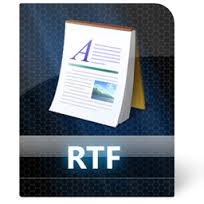
Create
So now that you have a rough idea of the images you will need, you need to create them.
Options for Creating Images
- Take Digital Photos. Set up your story, and take pictures. It will be similar to acting out the story, except you don't have to memorize lines. Get some friends and give them characters. Set up your scenes and take as many photos as possible. That way you have lots of options. Use your digital pictures for your comic.
- Use online software and adopt characters from their database.
- Draw your images. If you are a gifted artist, this will be your best bet.
- OTHER IDEAS?? You may have even better ideas than this to create your images like using Lego! Feel free to message me with some ideas if you need some help
Put it All Together
Now that have all your stills, you just have to put the book together. If you have drawn your book then you're done. Simply scan it and submit it.
If you are still creating it online, you need to upload your images, decide what software you're going to use, and add your dialogue.
Some ideas for creating your graphic novel:
- Photostory - a product for Windows that enables you to create a visual story using graphics/photos, text, audio and video
- Photoshop OR Gimp - create your own comic strip pages, with plot and dialogue bubbles. Save each page and create a slideshow. Save as .swf file.
- Microsoft Power Point OR Open Office Impress - create images and put them on slides.
- Webpage - design a webpage that has links that flow through your story. You will need to send me the link then for the assignment.
- Comic Life - if you have access to this program, you can use it to create the novel. (you will need to export the file as a .jpeg)
- Scan it - if you have chosen to draw your novel, all you need to do is scan it (and save it as .pdf or .jpeg). Be sure to put it together into ONE file, rather than uploading multiple files.
If you have any other ideas of what you would like to do, feel free to message me and discuss options.
Final Review
Once you have completed your Short Story you need to look it over once more and make any changes.
Some questions to ask yourself: Do I have...?
- At least 30 scenes - you may have multiple scenes on one page and are encouraged to have more scenes than 30
- Use of Dialogue - does your dialogue aid your story's development
- Plot development - contains solid plot structure, identifiable conflict and resolution
- Character development - consistent, and developed
- Setting
- Graphics - help develop setting and character, aid the story's development, engaging
- Title
- Evidence of Planning
Movie
Here are some guidelines for your movie:
- Your movie should have ONE main character and a MAXIMUM of THREE other characters.
- Your movie must have a clear plot.
- Your movie could include dialogue, music, sound effects.
- Your movie should include some type of conflict or issue or problem to overcome.
- Length? It's a short film...MAXIMUM 3 minutes.
Organize
Your movie needs to have all the major aspects of a narrative! Not sure what these are...
- Plot Structure
- Setting
- Character Development
- Conflict
- etc...
Create an outline of your movie. You don't necessarily have to write out the whole story of the movie, only the main points. However, it is at this point that it is essential that you remember the main structure of the short story! Make sure you develop your characters and your plot!!! A movie is not just moving pictures! It uses images and sound to tell a story; you must do the same.
The video to the right explains how to make an animated film BUT the planning aspects of it relate to all movies.
Storyboard
Now that you have your outline, you need to story board. Story boarding is used by film makers to get an idea of the shots they need, to tell their story.
All About Storyboards
A storyboard is a powerful document that contains all the visual, audio and time components of your video. You can use pictures to describe the visual element, like this:
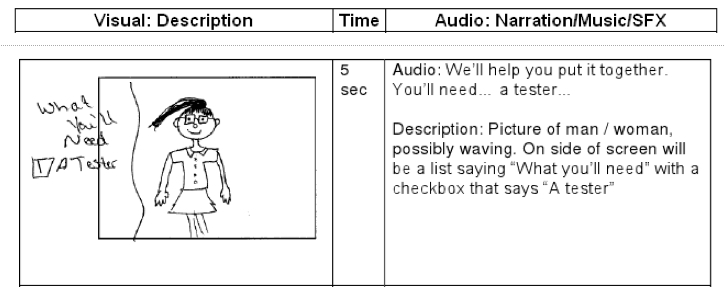
Storyboards capture these three elements for every scene of your video:
Visual/Description—A quick, rough sketch—no need to be an artist!
Time—The length of this particular image, in seconds.
Audio—Narration/Music/SFX - What you will be hearing when the image is shown. The three major components of audio are: Narration (people speaking), Music (background sound) or Sound Effect (SFX)—doors opening, car horns, birds calling, etc.
Storyboards can also skip the pictures and just describe the visual elements:

Do not use a script, since it lacks the visual descriptors and only captures the dialogue.
Storyboard Templates
The most important part of this part of your assignment is your planning. You can download a storyboarding sheet and use it to get a plan for your story. You don't need to spend lots of time drawing your plan out, simple stick men will do. Just make sure you have a clear vision for what that block will look like to accomplish its purpose.
- Storyboard Example
-
Storyboard Templates 

Create
Now you are ready to create your film. There are many different ways to create your film:
- using real-life actors
- using Lego or other "toy" figures (using the "Stopmotion" technique)
- using online cartoon character,
- and so on.
Software
- Windows Moviemaker
- iMovie (Mac)
- Go Animate - an online program that creates moving cartoons
- Movie Storm - an online program that you can use to create moving cartoons
- Xtranormal - an online program that you can use to create moving cartoons
Final Review
Once your Movie is done, you need to look it over. It should be engaging, but it should still have a good story line.
Some questions to ask yourself:
- Can the reader clearly identify my characters?
- Does my plot develop?
- Clearly defined setting?
- Audio makes sense and adds to the story?
- Scenes look professional, and clear?
Once you're happy with your product, you're ready to submit it.
Assessment
- 2 - 3 minutes long
- Use of Dialogue/Audio - does your dialogue/music enhance your story?
- Plot development - contains solid plot structure, identifiable conflict and resolution
- Character development - consistent, and developed
- Setting
- Evidence of planning
- Overall Presentation